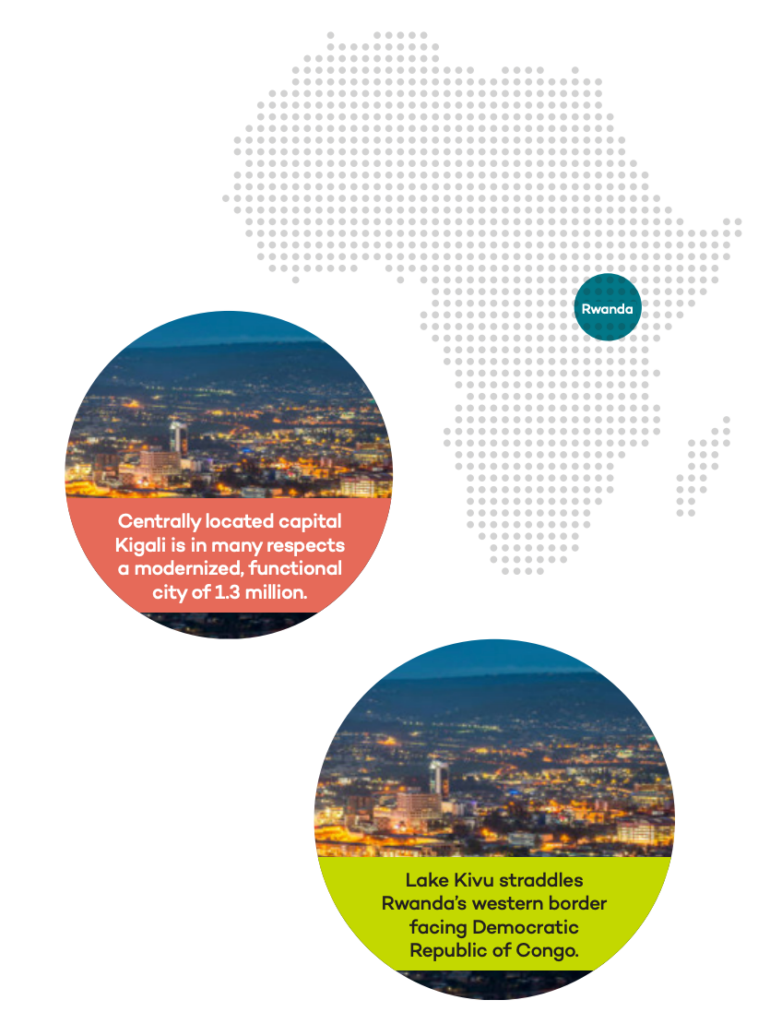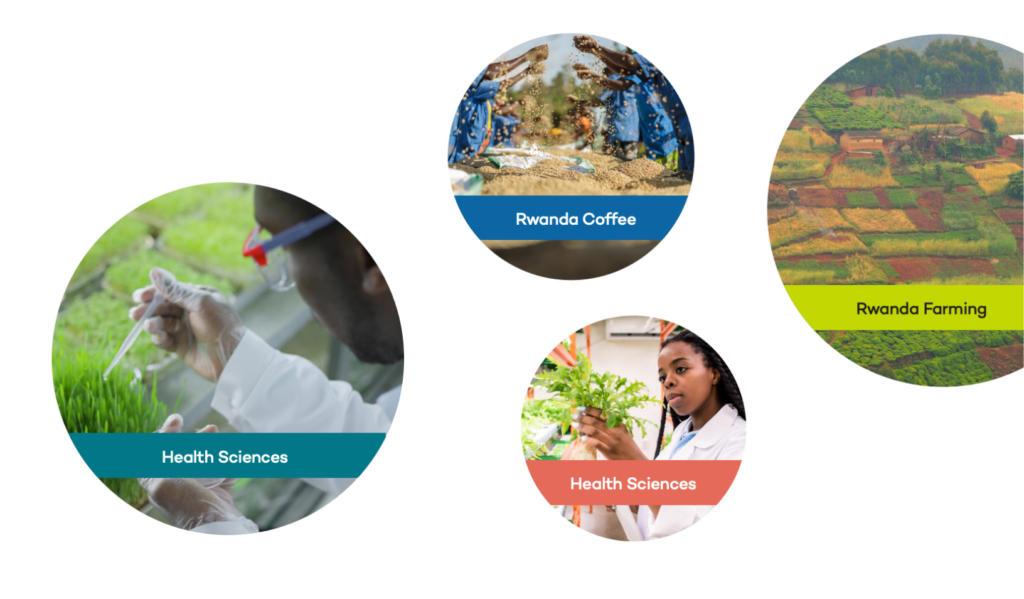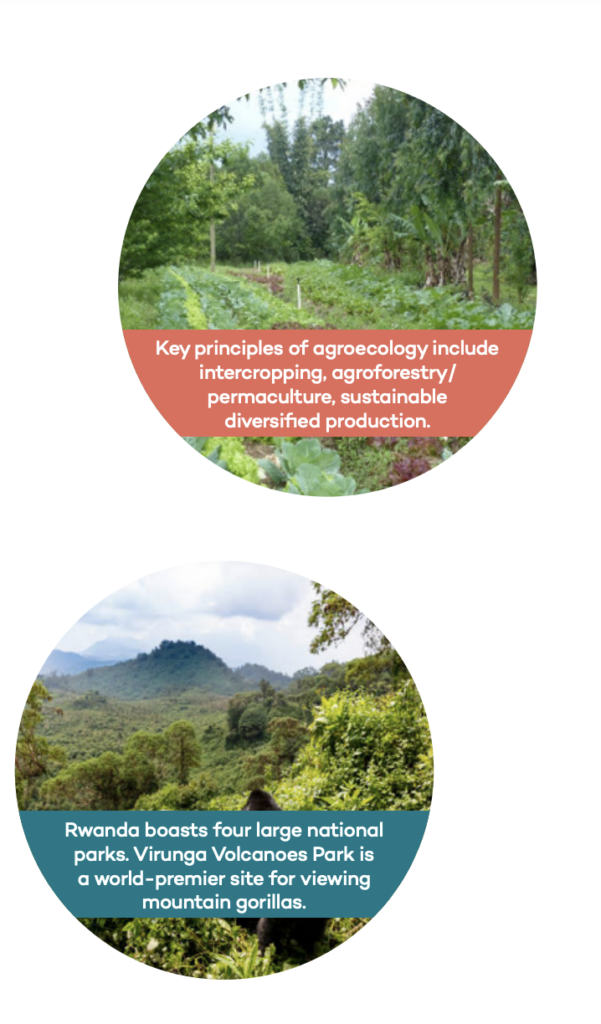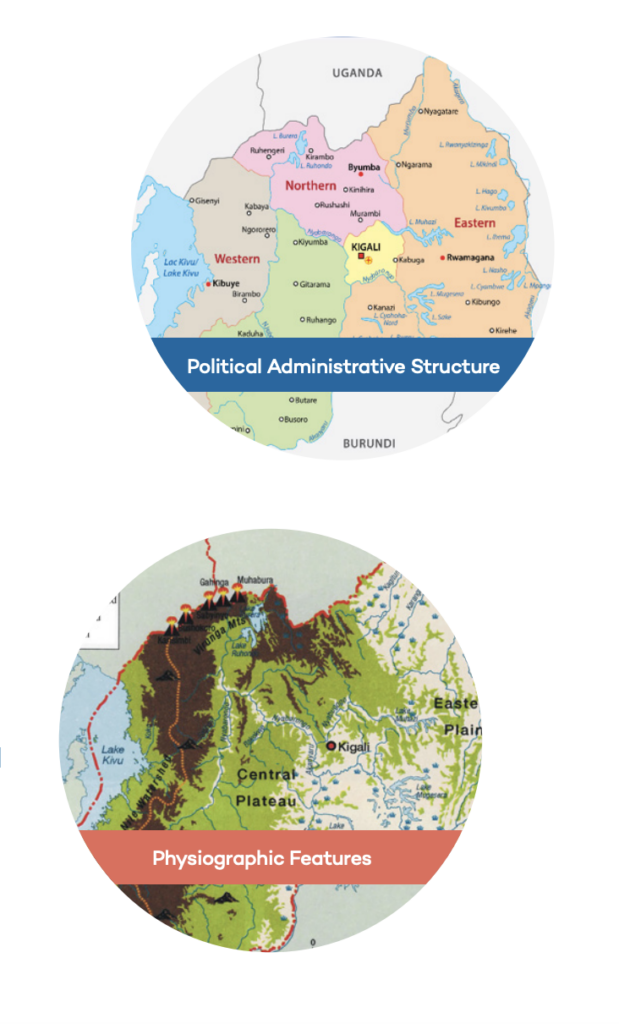Written by: Christina Surowiec
Rwanda, like the rest of Africa and the world as a whole, is at a stage of tentative recovery from the Covid-19 pandemic – with tentativeness compounded by disruptions to food and energy markets emanating from the ongoing Russia-Ukraine war. Given this broadly foreboding situation and the fact that Rwanda is a fuel importer, its IMF-projected annual rate of GDP growth in the high 4% range merits favorable mention, especially given headwinds of Covidaggravated logistical difficulties, spotty world commitment to Africa (if that), and unresolved conflicts or potential conflicts in the broader region. As a small, landlocked country, Rwanda has high sensitivity to conditions and developments across its neighboring region. Manifesting this dynamic,

- Trade moves solely by road and air. A prospective rail link facilitating seaport access, likely from Tanzania, would significantly stimulate economic activity in Rwanda, the adjacent giant country DRC, and East Central Africa generally. An uncertain world financial and regional political environment augurs against expeditious fulfillment of this need. A “stall” on development finance and projects cannot on its face be a good thing, but it does provide a window to reflect on how to optimize outcomes for all stakeholders. Hastily executed, ill-conceived projects would also have a serious downside.
- Infrastructural deficiencies and challenging geography arguably push a country like Rwanda into a “niche” as opposed to “bulk” development modality. At less than US$1,000 annual per capita GDP, Rwanda is not on the verge of attaining middle income status, as several subSaharan African countries are starting to do. Yet visitors to Kigali and the parks frequently remark that Rwanda doesn’t present an image of severe poverty, rather a materially adequate lifestyle mostly seems to prevail. By implication, Rwandans are putting too-scarce hard currency to exceptionally beneficial use. (The study of places that seem less poor than economic data would seem to show is not exhaustive; other examples of this serendipitous making-do include Kerala and Ladakh in India.)
Main Products & Sectors
Rwanda is a small, compact country. Its centrally located capital, Kigali, is by far the largest city at a
manageable 1.3 million in population. While Rwanda’s geographic layout is disadvantageous in several
respects, it is potentially favorable for a “hub and spoke” economic plan that could emphasize particular enterprise clusters as a dedicated strength of smaller regional cities. Economists theorize that cluster development – encouraging firms in the same sector or related sectors to locate in close proximity – can generate take-off momentum in attracting expertise, advancing creative achievements, and enhancing regional prosperity.
Sectoral endeavors anticipated to hold the most promise are:
- Health Sciences – including research in tropical diseases
- Tourism – especially geared to low-impact, high-revenue visitation of nature parks
- Agriculture – for both food security and marketization.
The latter, agriculture, is not properly a cluster but rather the country’s dominant occupation and land
use. Historically, coffee and tea were the highest value export crops, followed by bananas, horticultural products, and maize and cassava for regional use. In fact, virtually anything subtropical or warm temperate will grow beautifully somewhere in Rwanda, known for its fertile volcanic soil. Rwanda is already recognized as a leader in agroecology, loosely defined as a form of farming that
- Assigns equal importance to immediate crop yield and to maintaining the land’s productive capacity indefinitely into the future
- Minimizes (but does not necessarily ban) use of high cost, externally purchased, perhaps toxic inputs
- Encourages permaculture, e.g. tree crops, reducing demand for tillage that requires costly and physically draining labor while tending to damage soil structure
Agroecology, for instance in coffee and/or tea, dovetails neatly with a commitment to gender equality. This low input, low impact model is especially well suited for women farmers. (The inputs and impacts are often high initially, but once a production system is in place, stable or increasing yields become increasingly easy to achieve.) Furthermore, agroecology stresses coexistence of agricultural production and natural habitat on the same plot of land. On every continent, including Africa, successful ecologically managed farms in some cases have been known to support larger, healthier populations of native flora and fauna than nearby wildlife preserves.
Services are gaining ground as a source of jobs and income. Development to promote tourism, typically on a low volume, low impact but pricey ecotourism template, was a key driver of Rwandan economic activity pre-pandemic. Regaining this trajectory should happen in due course, though at the present time geopolitical and financial impediments persist amid lingering uncertainty about Covid. Professionalization of tourism services is quite strong in East Africa. Entrepreneurs in the sector should find cause for regained confidence in the medium term if not sooner.
Rwanda has already emerged as an African leader in health sciences. Both NGO and some corporate funding are sustaining the sector while the public fisc is constrained. (Rwanda still covers about 30% of its government budget through external grants.) Some activity takes the form of clinical trials for pharmaceuticals developed elsewhere, in richer countries, using Rwanda as a lower cost platform. But some is African-initiated advanced research, and as the continent’s expertise mounts, the latter will come more to the forefront. Rwanda has begun awarding medical degrees in-country; its university sector is expanding quite nicely across the board.

Guidance & Prospects
Macroeconomic principles are not a certain or fixed science, but their century or two of formulation through “natural experiments” gives us a usable toolbox. The same principles should hold for any location. Rwanda like any country has its own unique set of assets and liabilities. Some of the liabilities – we might query when or if the long-awaited rail link to the sea will ever get built – are intractable. Conversely, work-arounds can often be found. If mass tourism is impracticable, ecotourism with less damaging impact and higher per head revenues can fill the breach.
If the domain under consideration is possible cash
crops, Rwanda boasts an enormous variety to choose from. As a developing country, Rwanda needs to boost sectors with greatest likelihood of effectively benefiting both specifically engaged economic actors and the surrounding community.
Diversified production (of goods and services) is normally an enhancement to overall resilience. If one enterprise area slumps, others can plausibly pick up the slack. Diversity of production is not incompatible with cluster development theory; ideally, multiple individually concentrated clusters form a complementary severalty. Distributional equity is paramount for public buy-in. Low level jobs that exploit labor beyond a decent business like limit will generate antagonism. A focus on value-added production is germane for all developing economies. External sale of raw commodities intrinsically minimizes gains realized from their harvest or extraction. Rwanda will continue to expand value-added treatment of its impressively diverse agricultural bounty. The country hosts a fairly large contingent of food processing and light manufacturing for local and regional markets, although lack of infrastructure appreciably constrains world market prospects. Resource conservation is not just an ethical code word; people in the 21st century need to adopt lower impact, preferably non-extractive ways to meet their need for sustenance and amenities.
In health sciences and applied public health, in a
relatively modest but also innovatively green tourism sector, and prospectively in an ascendent contribution from agroecology-raised crops and growing agroecological knowledge, Rwanda punches above its weight. A sustained record of forthcoming positive accomplishments is a reasonable expectation.

Geographic Appendix
Rwanda is divided into four provinces plus the
Kigali capital district. Provinces are considered
administrative conduits for efficient tranmission of
central government policies and programs; they are not independent policymaking bodies. By contrast, sub-provincial entities (municipalities and districts) constitutionally hold substantial policy autonomy, though fiscal constraints impede lavish initiatives.
Rwanda boasts one of the world’s highest ratios,
possibily the very highest, of female parliamentarians at around 60%. (Its constitution specifies a 30% floor for female parliamentary representation.) The country has instituted umuganda, mandatory community service, on last Saturday of each month. Primary and secondary education are essentially universal, though not free.
Rwanda receives high marks for making government information and services digitally accessible. According to the NGO Transparency International, Rwanda is one of Africa’s four least corrupt nations and its global position of 49th essentially places it at the bottom of the top third worldwide in terms of perceived government probity.
The most notable features of Rwanda’s physical
geography, aside from compactness, are high elevation and location straddling the continental spine. Eighty percent of the drainage, from the Central Plateau east, discharges into the Nile Basin. Western Rwanda is part of Africa’s magnificent Great Lakes region, its waters feeding the Congo River valley. Rwanda has several national parks, including a premier site for mountain gorillas. It derives 12% to 13% of GDP from tourism.
Diversity of elevations and microclimates supports cultivation of varied agricultural products. Rwanda’s population skews quite rural and agricultural even by African standards. Its development challenge considered holistically, should not be to become less agricultural, but to improve agricultural infrastructure, nurture value added processing, and expand both local and export markets.

